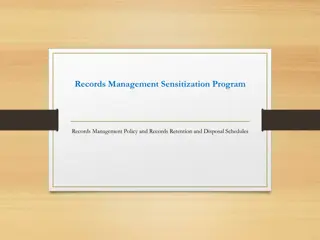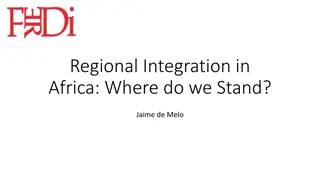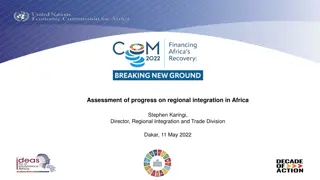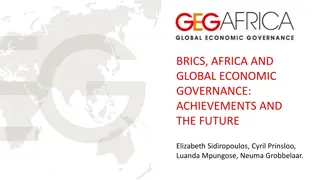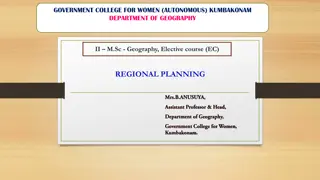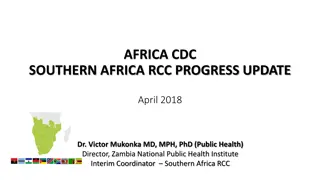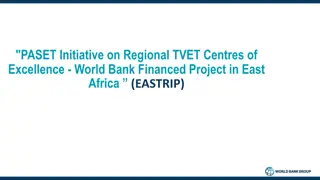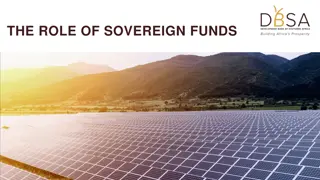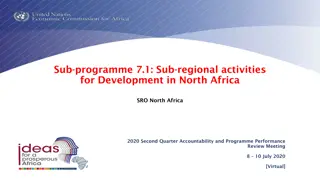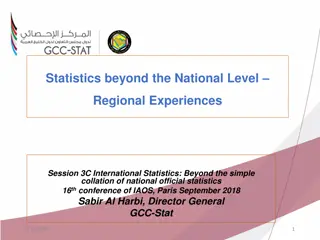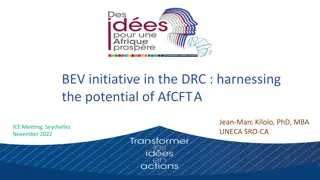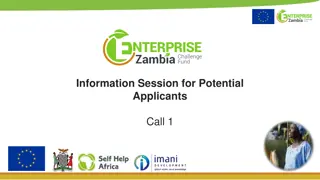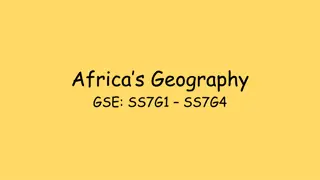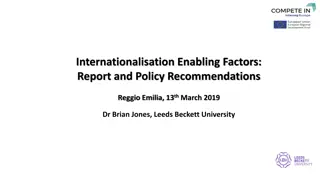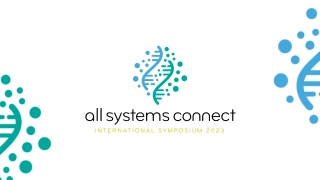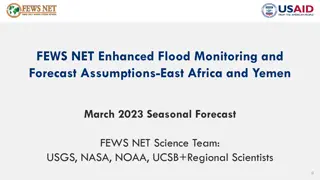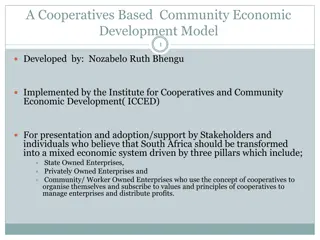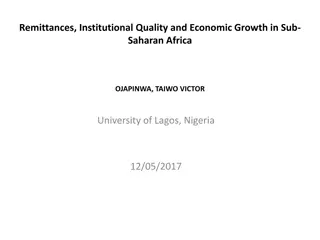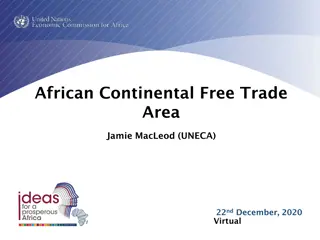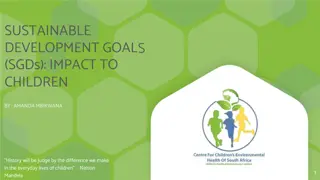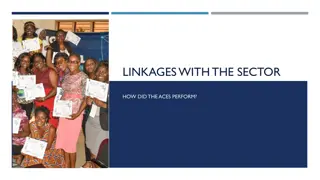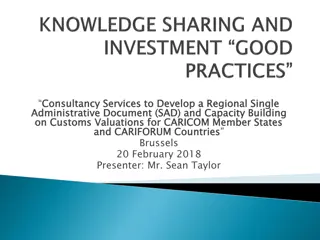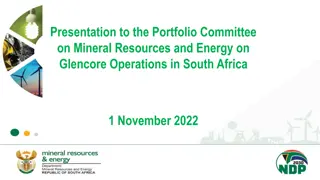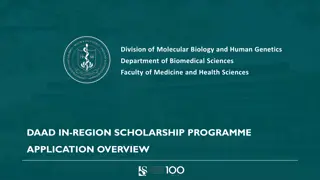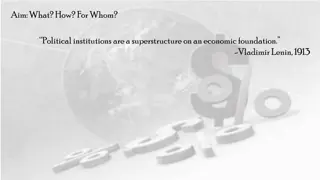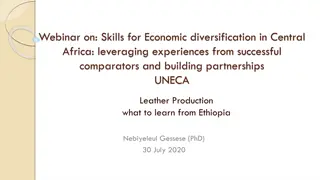Overview of COMESA: Economic Regional Organization in Africa
COMESA, established in 1981 as the Preferential Trade Area, is now the largest economic regional organization in Africa. With 19 active member states, its vision is to be a fully integrated economic community with high living standards. The organization aims to create free trade, establish a customs union, promote free movement of capital and investments, and eventually have a common currency. In addition, COMESA focuses on gender equality, women empowerment, and social affairs within its member states.
Download Presentation

Please find below an Image/Link to download the presentation.
The content on the website is provided AS IS for your information and personal use only. It may not be sold, licensed, or shared on other websites without obtaining consent from the author. Download presentation by click this link. If you encounter any issues during the download, it is possible that the publisher has removed the file from their server.
E N D
Presentation Transcript
COMESA COMESA was initially established in 1981 as the Preferential Trade AreA (PTA) FOR EASTERN AND SOUTHERN AFRICA (PTA). The PTA was transformed into COMESA in 1994. It is the largest Economic Regional Organisation in Africa. COMESA VISION To be a fully integrated, internationally competitive regional economic community with high standards of living for all its people ready to merge into an African Economic Community There are currently 19 active Member States in COMESA. 1
COMESA MEMBER STATES MALAWI BURUNDI MAURITIUS COMOROS http://about.comesa.int/images/stories/Thump_Rwanda.png RWANDA D R CONGO SEYCHELLES DJIBOUTI SOMALIA EGYPT http://about.comesa.int/images/stories/Thump_Sudan.png SUDAN ERITREA TUNISIA ESWATINI ETHIOPIA UGANDA KENYA ZAMBIA LIBYA ZIMBABWE MADAGASCAR 2
About COMESA An international inter-governmental organization established through a Treaty by Governments of the Member States (MS) Its headquarters is Lusaka, Zambia Gets finances from contributions by Member States & international donors Has three official languages; English, French and Arabic It has specialized institutions based in other Member States Objectives of COMESA 1. Create and maintain a full free trade with free movement of goods and services produced within COMESA and the removal of all barriers. 2. Establish a Customs Union where goods and services imported from non-COMESA countries will attract an agreed single tariff. 3. Free movement of capital and investments. 4. Gradual establishment of a payment union and the eventual establishment of a common currency. 5. Adoption of a common visa including the right of establishment leading eventually to free movement persons. 3
COMESA GENDER AND SOCIAL AFFAIRS The Gender and Social Affairs division was established in 2008 and operationalised in 2009. This division is mandated to provide leadership, direction and oversight of the implementation of the COMESA gender policy in the member states and at the secretariat. It also oversees the mainstreaming of gender within the secretariat and COMESA programmes. It also oversees the implementation of the social and cultural affairs activities. The mandate of the Gender and Social Affairs Division is aligned to Articles 154 & 155. In Article 154, the Treaty recognizes that women make significant contribution towards the process of socio-economic transformation and sustainable growth, and that it is impossible for COMESA to implement effective programs for rural transformation and improvements in the informal sector without the full participation of women, men and youth. In this regard, the article provides for integration and participation of women at all levels of development, promotion of gender equality and women empowerment. Article 155 calls on member states to increase awareness on gender equality, women in business issues at policy level, create an enabling environment for effective participation of women in trade and development activities, promote special programs for women small and medium entrepreneurs (SMEs), advocacy to eliminate laws and regulations that hinder women s access to credit, initiate training to enhance technical capacity. 4
COMESA SOCIAL CHARTER The development of the COMESA Social Charter is in line with the COMESA Treaty Article 143 para.(2) which stipulates that the council shall adopt a social charter, programmes and regulations, as the case may be, on better implementation of co- operation in social and cultural affairs . It calls upon member states to take cognizance of and put in place measures to ensure the promotion of close co-operation amongst them in the social and cultural fields. The following sectors are stipulated under the treaty: Employment and working conditions; Labour laws; Vocational training and the eradication of adult illiteracy in the region; Cultural and sporting exchange; The prevention of occupation accidents and diseases; The right of association and collective bargaining between employers and workers; Radio and television programmes on matters that will promote cultural development of the common market; and Provision of facilities for persons with disabilities and older persons (elderly). 5
The COMESA Social Charter was adopted in February 2014 at the Thirty Second meeting of the Council of Ministers held in Kinshasa, Democratic Republic of Congo. Mauritius signed the Charter on 21 April 2015. As at 04 October 2019, out of 19 member states, Mauritius, Malawi Madagascar AndSeychelles have signed the document. The Ministry of Gender Equality and Family Welfare cannot proceed with the dissemination and implementation of the various articles of the charter in view that the charter has not been signed by the minimum of the 12 member states. 6


